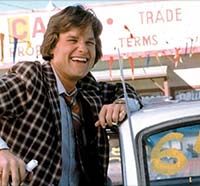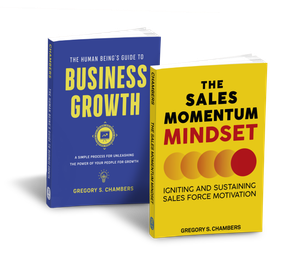Trust and Selling
Trust and Selling

Last weekend I was forced to complete a task the equivalent of visiting the dentist about a sensitive tooth. Car shopping.
I needed to pick up a replacement vehicle for the kids. Not only was it going to be a visit to the dreaded car dealer, it was going to be a visit to the used car dealer. Not my idea of a good time, but I took a swallow of my own medicine, thought up ways to apply my self-described character strengths (creativity, humor, capacity for love, love of learning, and curiosity) and apply them to the situation.
I turned it into a field trip.
I visited six dealerships over the course of 3 days and drove a dozen used cars. I have one major observation from the experience and three ideas that your team can be apply to any professional services selling situation.
Trust. At the core of all selling is trust. The core of most of our business communication.
When I think about how trust is built, I made the following observation: trust comes from competence, plus reliability, plus relationship halved by our perception of their self-interest. Take your last doctor visit, for instance. You assume competence by the sheepskin on the wall, you assume reliability by the size of the office and number of patients in the waiting room, so your trust depends on the comfort of the relationship (are you comfortable sharing sensitive information) and her recommendation. That last part is pretty important. When a recommendation is made, does it sound like it's in your best interest, or do you get the sneaking suspicion that she's saying these things for reasons that may be in her best interest?
In your selling situations, it's easy to prove competence and reliability, but it's hard to build the relationship and keep your self-interest in check. The more those last two variables tilt in your direction, the stronger the trust, the easier the transaction.
The first challenge these car dealerships have is with trust. It's an exposed raw nerve for them because it needs to be built quickly. In my visits, the dealerships were 0 for 6 when it came to building trust. Abysmal. The reason was fairly evident from the moment I walked on the lot. I'll break it into 3 parts.
The salespeople didn't have any idea about how my decision is made. And they had zero interest in finding out. They were more interested in their sales process than my decision process.
The salespeople didn't trust me. Even my 16 year old son could feel it. Whether it was my competence and reliability or it was the lack of relationship or, most likely, my raging self-interest, the conflict was immediate and palpable.
The unchecked assumptions ran rampant. "Oh, we'd never be able to do that," was a standard reply to a request, whether or not we were in the negotiating phase of the transaction.
Let's apply these observations to your business.
- How is a decision going to be made? In this case, the car dealers have invested tens of thousands of dollars into their web sites, but the salespeople seemed shocked when I asked to see a particular car listed on the site. I'll make a bold proclamation here. In 2016, roughly 80% of their customers have visited their website before coming in. That's why the dealership spends so much money keeping it up to date. The reps need to acknowledge it, then get "off the solution" as we say. If you are lucky enough to have leads contacting you about a service or offering, be ready to talk about the specifics, but also be ready to take the buyer back one step in the decision process. In the car dealer's case, it would sound like, "Yes, that is a great car. Let's go look at it. By the way, out of all those cars on the site, come to think of it, out of all the cars in the city, what put that one on your short list?" Get some insight into how they are going to make a decision.
- Trust, but verify. Do you have a dog? I've had two, and they have a particular trait that shows how much they trust their owners. They roll over and give you access to their belly. Especially if you're not happy. It's like they're saying, "You're right. I'm bad. Here. Kick my belly. I'm ok with it. Really." It's complete trust that you're going to be a good pack leader and treat them right. I'm not saying that you act like a subservient dog, but I do think you need to trust that the prospect isn't trying to take advantage of you or make you look bad. In the car dealer's case, my hackles were up the moment I stepped on the lot. Decades of unpleasant buying experiences rose to the surface. Mind you, I have never had a bad car purchase in all those years, but you wouldn't know it by my body language. If the salesperson met me with an "exposed belly" up front, my defenses would have dropped. Assume the prospect isn't going to be a jerk.
- Make sure you're on the same page. I learned a lot about the inner workings of car dealerships because every question I had about the car and its price was met with a response that told me about what the management would and would not accept. It happened every single time. We weren't communicating well. We used words that we both understood, but based on their responses, we were miles from being on the same page. Check your assumptions along the way. In a nice way. Remember the first parts of Trust? Competence and reliability? Make sure you're on the same page with your prospects, especially when you are more familiar with the process than they are.
Selling services is not like selling cars, but at the process level, the 10,000 foot level, it's a decision process all the same. A process that relies on trust being established, in order to help a prospect make a decision that everyone can live with.
Good stuff.




